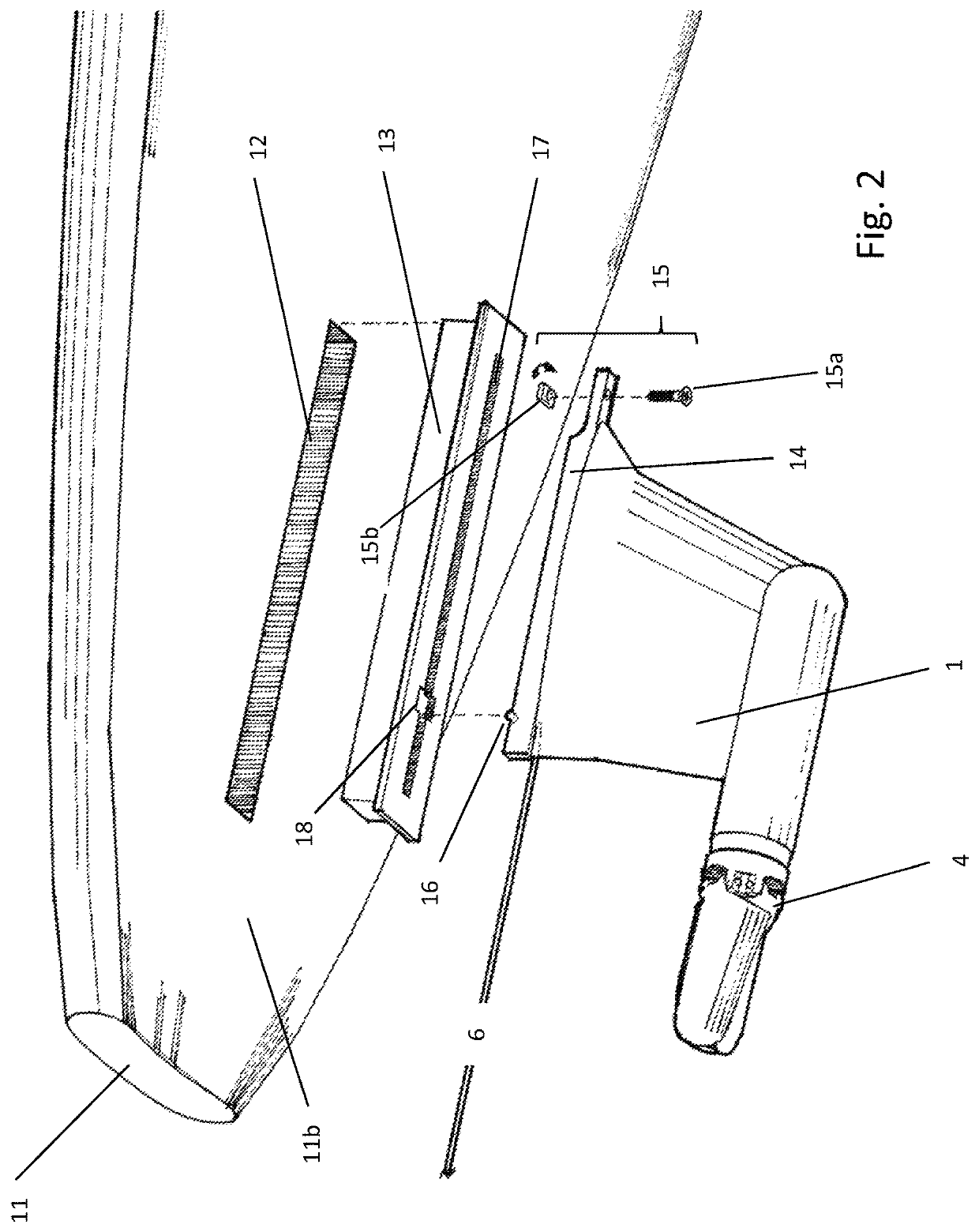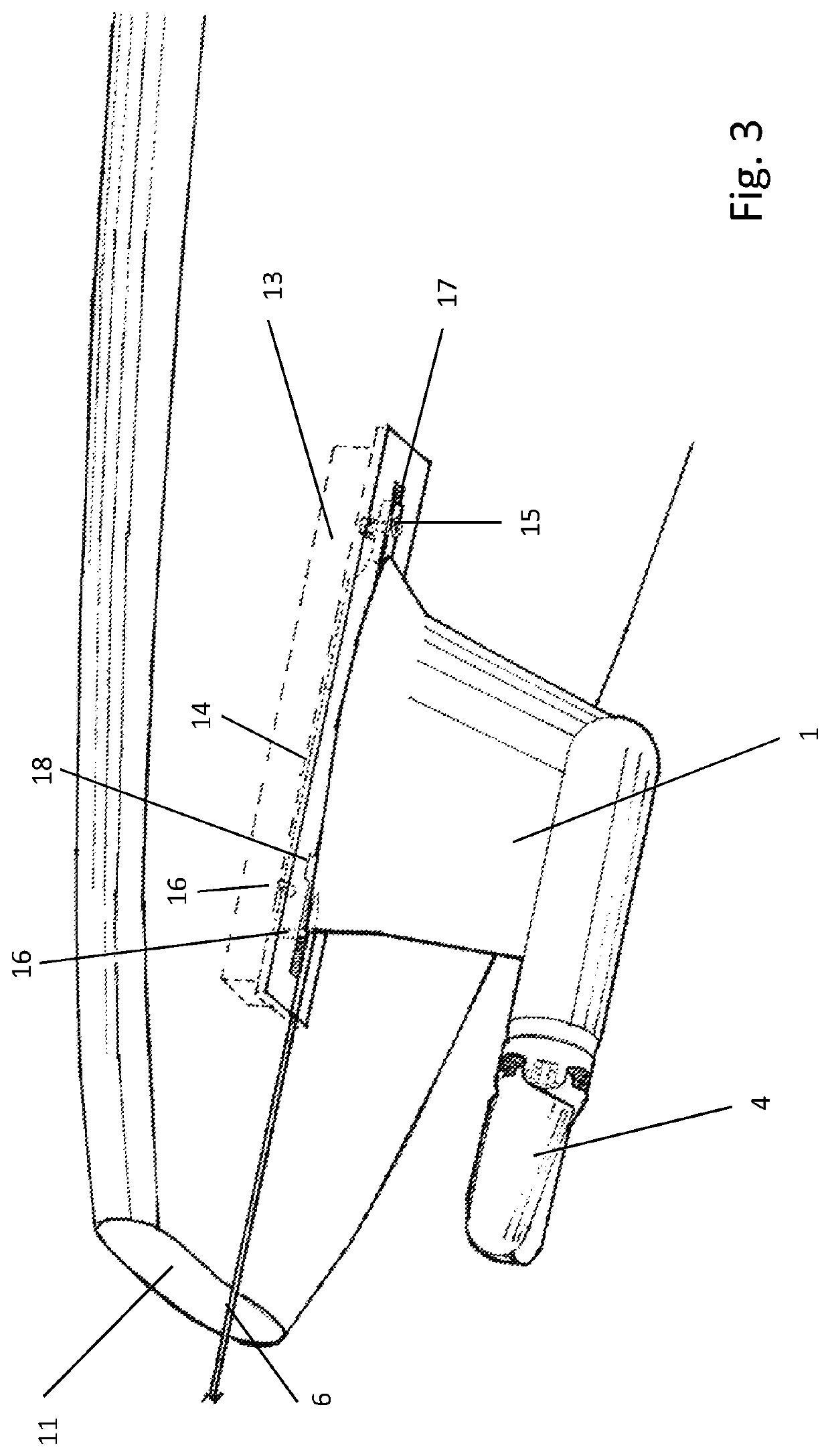Surfboard booster system
a booster system and surfboard technology, applied in marine propulsion, special-purpose vessels, vessel construction, etc., can solve the problems of limited number of surfers, increased wave catch time, and difficulty for surfers, and achieve the effect of improving experien
- Summary
- Abstract
- Description
- Claims
- Application Information
AI Technical Summary
Benefits of technology
Problems solved by technology
Method used
Image
Examples
Embodiment Construction
[0036]FIG. 1 shows the primary elements of the surfboard booster system, as attached to a surfboard illustrated in partial cutaway view. A detachable motorized fin 1 (further described in FIGS. 4 and 6), boosts the forward movement of a surfboard 11, which may be any surfboard with provision for standard detachable surfboard fins (attachment mechanisms further described in FIGS. 2 and 3). The fin 1 turns a propeller 4, and in the illustrated example the propeller includes folding blades (further described in FIG. 5) which open and provide forward thrust to the surfboard 11 via a mechanical attachment between the fin 1 and the surfboard 11.
[0037]The motor in the fin 1 is an electric motor and is powered by an external power supply. In the example as illustrated in FIG. 1, the power supply is a board-mounted battery pack (further described in FIG. 12), and as shown it is mounted to the upper surface 11a of the board. Power is supplied to the motorized fin 1 via a conductor 6 which is ...
PUM
 Login to View More
Login to View More Abstract
Description
Claims
Application Information
 Login to View More
Login to View More - R&D
- Intellectual Property
- Life Sciences
- Materials
- Tech Scout
- Unparalleled Data Quality
- Higher Quality Content
- 60% Fewer Hallucinations
Browse by: Latest US Patents, China's latest patents, Technical Efficacy Thesaurus, Application Domain, Technology Topic, Popular Technical Reports.
© 2025 PatSnap. All rights reserved.Legal|Privacy policy|Modern Slavery Act Transparency Statement|Sitemap|About US| Contact US: help@patsnap.com



